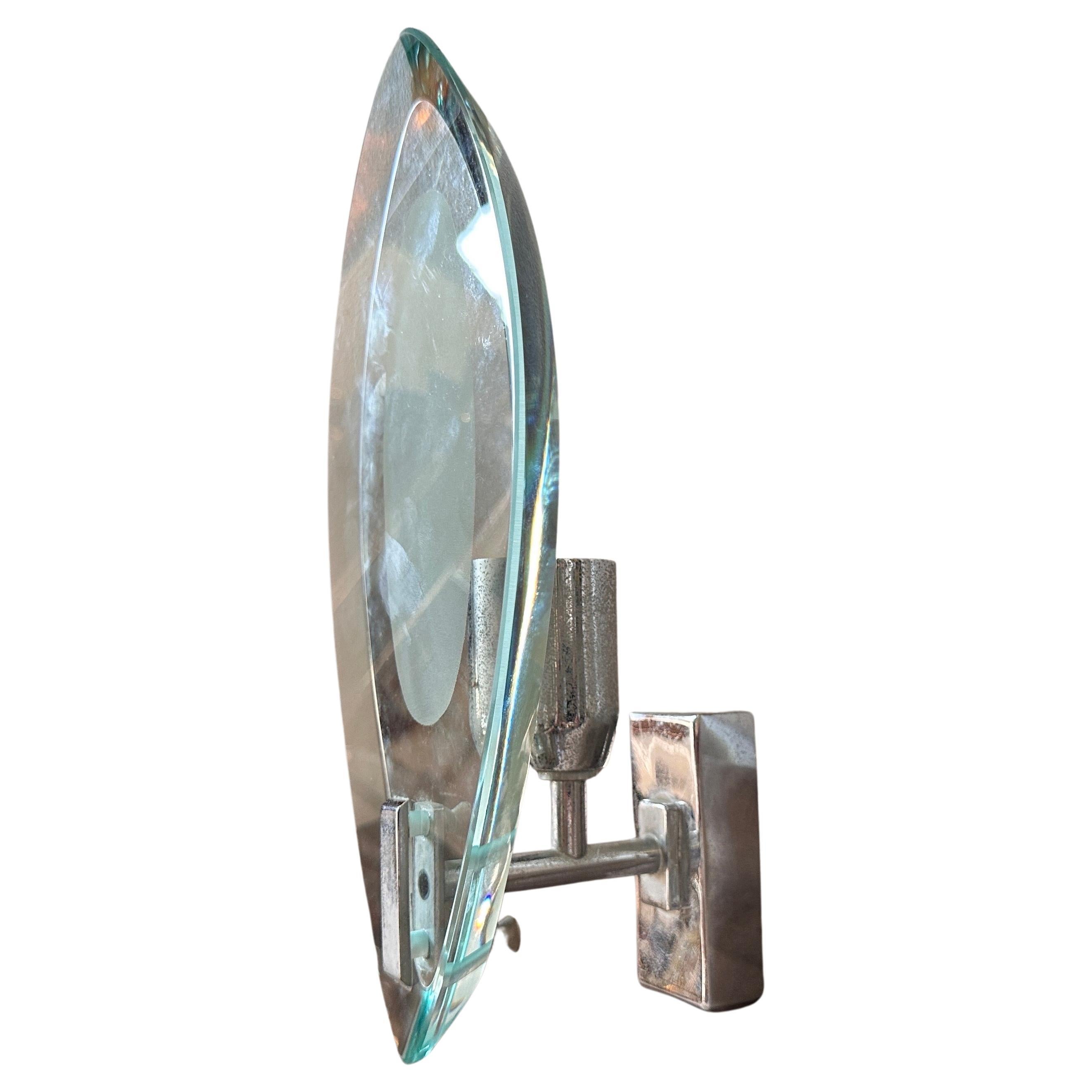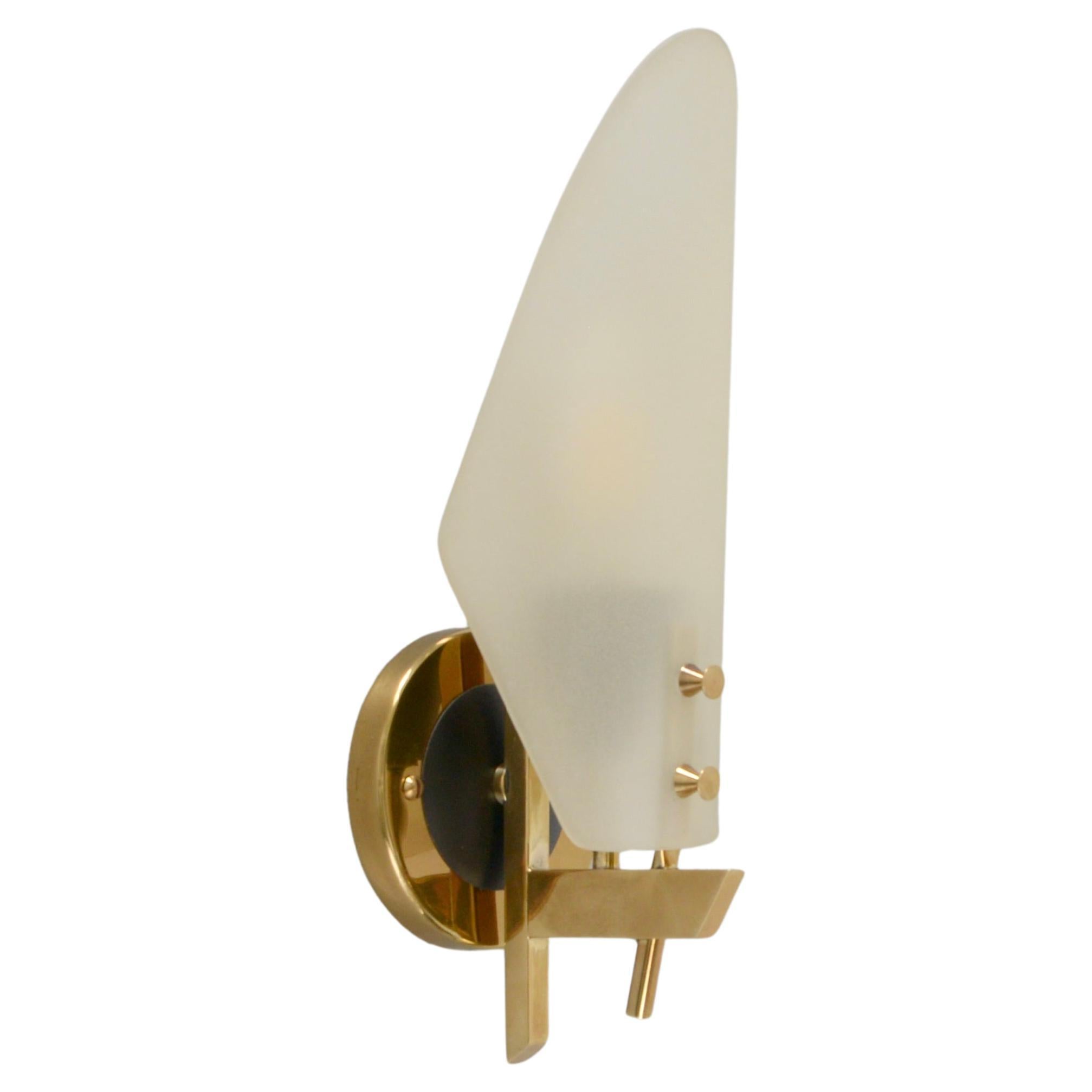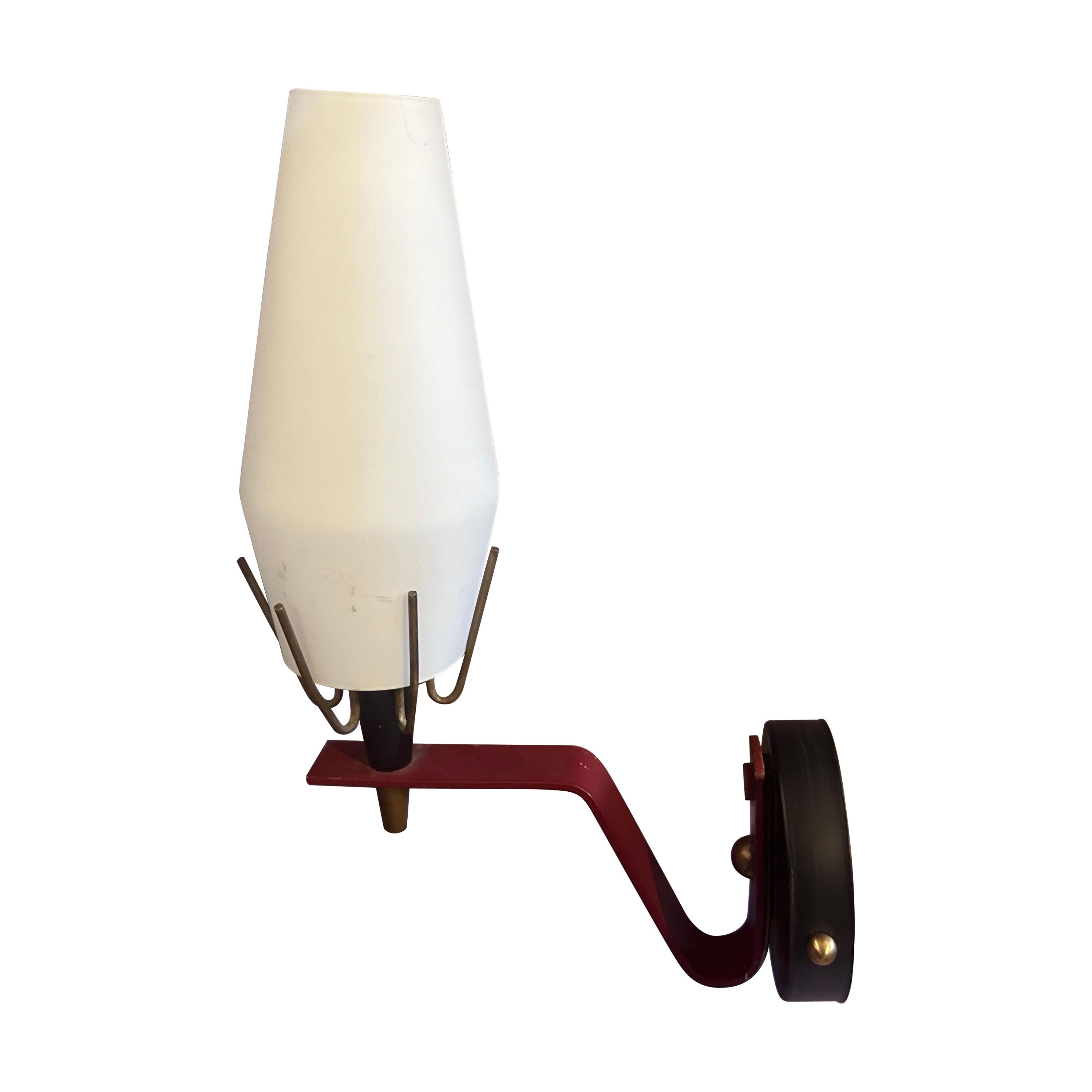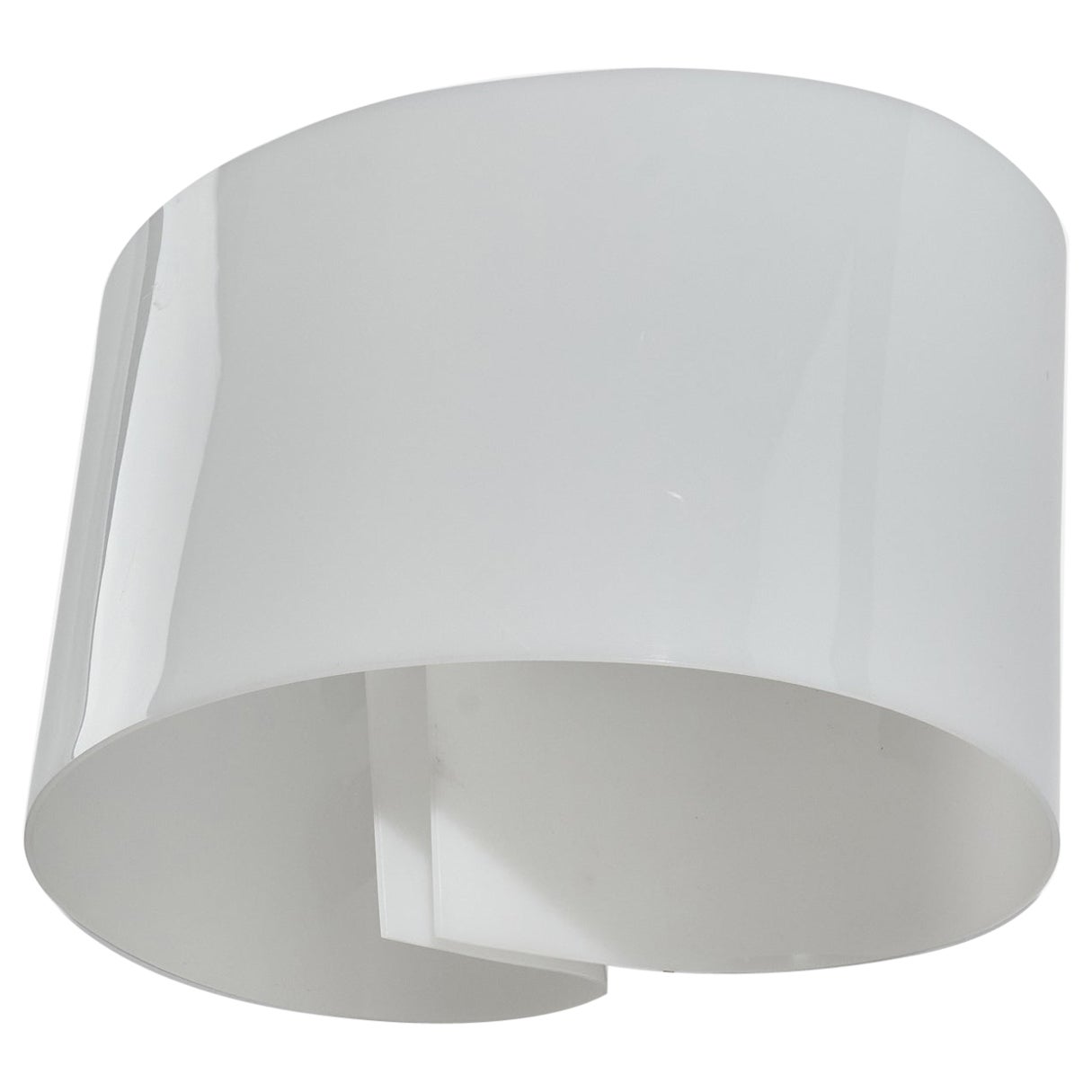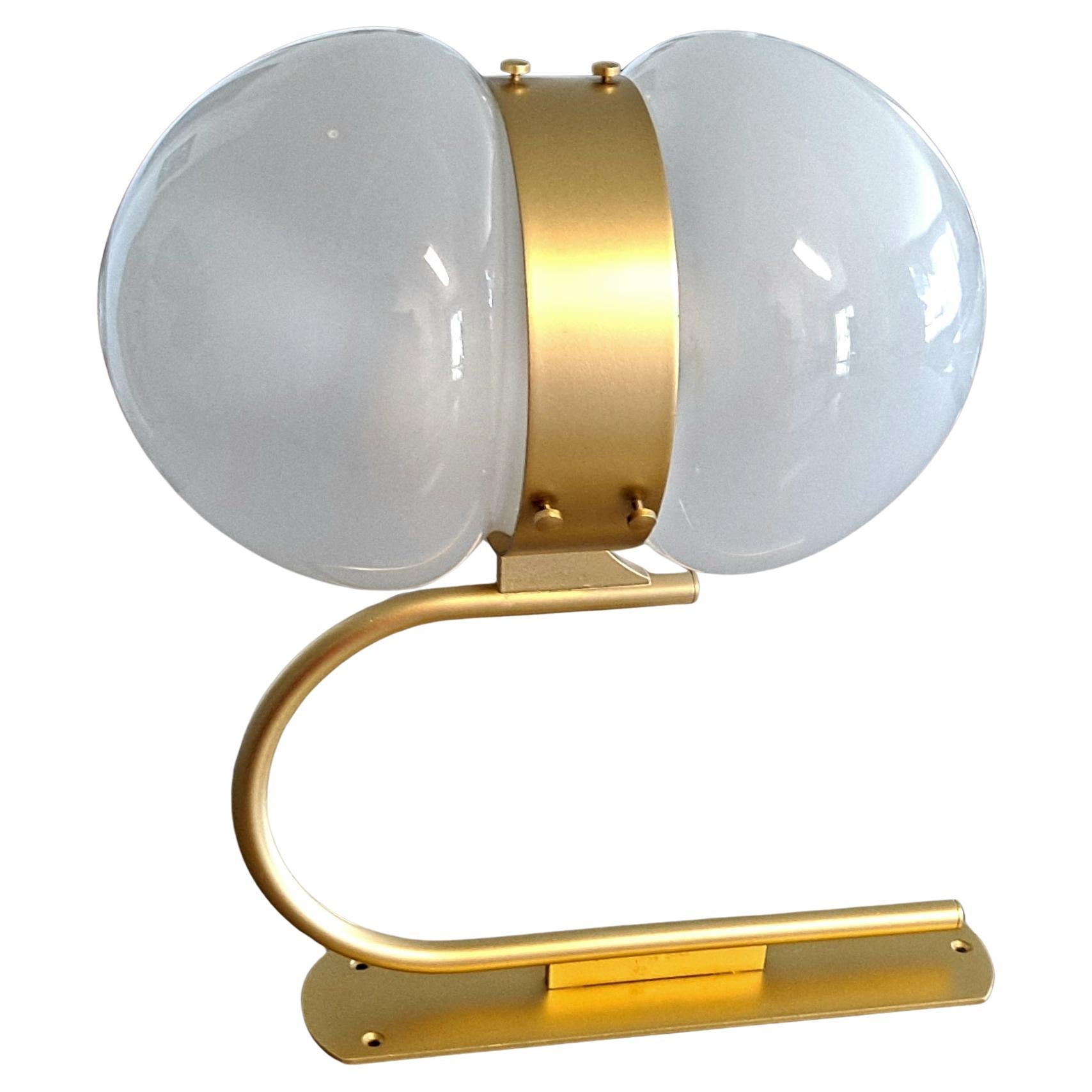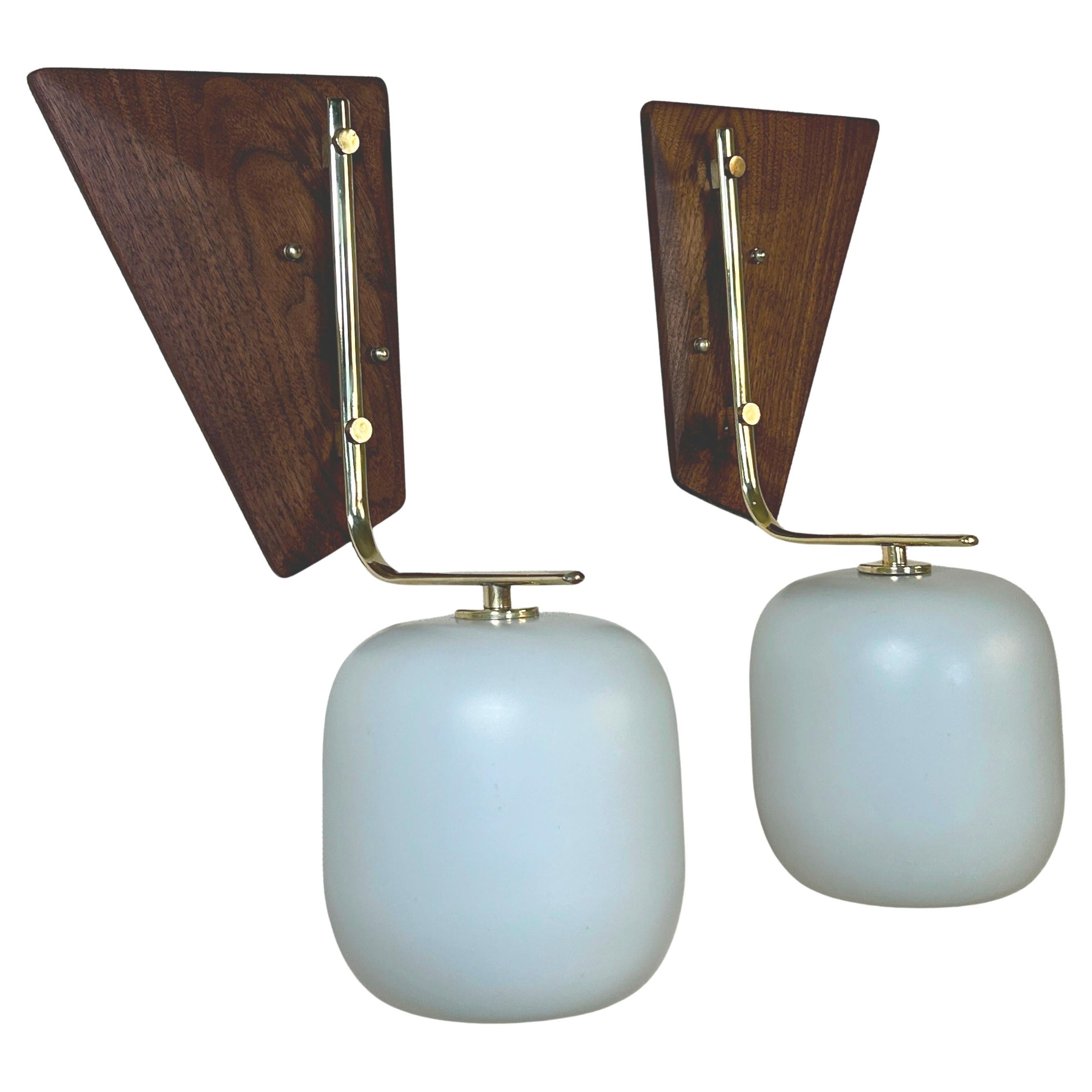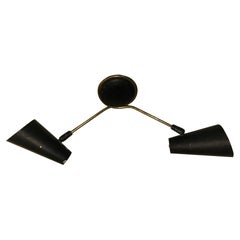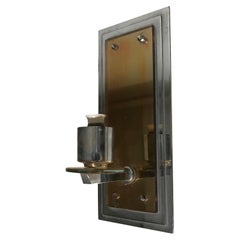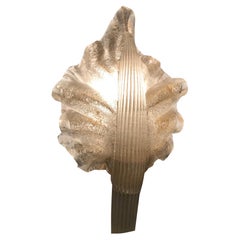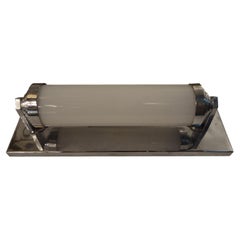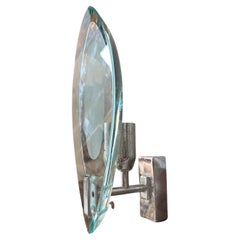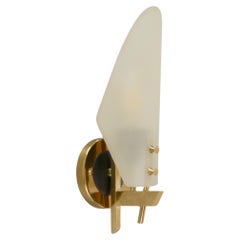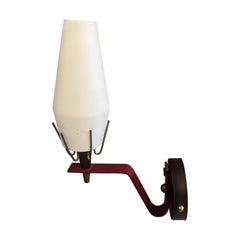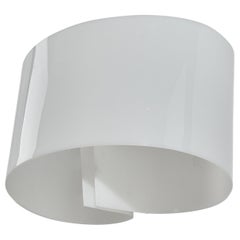Items Similar to Sconce Italian, 1960, Materials: Acrylic and Wood
Video Loading
Want more images or videos?
Request additional images or videos from the seller
1 of 8
Sconce Italian, 1960, Materials: Acrylic and Wood
$2,600per set
£1,963.28per set
€2,262.47per set
CA$3,669.71per set
A$4,045.77per set
CHF 2,116.61per set
MX$49,634.04per set
NOK 26,643.98per set
SEK 24,916.34per set
DKK 16,896.16per set
About the Item
Sconce
Materia: acrylic and wood
Country: Italian.
We have specialized in the sale of Art Deco and Art Nouveau and Vintage styles since 1982. If you have any questions we are at your disposal.
Pushing the button that reads 'View All From Seller'. And you can see more objects to the style for sale.
Why are there so many antiques in Argentina?
In the 1880 – 1940 there was a grate wave of immigration encouraged by the periods of war that were taking place.
1st World War took place between 1914 and 1918
2nd World War took place between 1939 and 1945
The immigrants options were New York or Buenos Aires. Tickets were cheap and in Buenos Aires they were welcomed with open arms, as it was a country where everything was still to be done.
Argentina was the country of new opportunities, labour was needed and religious freedom was assured, in many cases the of the family travel first until they were settled and then the rest of the family members join them.
In the immigrant museum “Ellis Island Immigrant Building” in New York you can se the promotional posters of the boats that would take them to a new life.
Between the years 1895 and 1896, Argentina had the highest DGP (gross domestic product) per capita in the world according to the Maddison Historical Statistics index, this situation arose due to the large amount of food being exported to European countries, which were at war.
The Argentinean ships left the port of Buenos Aires with food, but they returned with furniture, clothes and construction elements, (it´s common to see this the old buildings of the historic neighbourhood of San Telmo, the beams with the inscription “Made in England)”, as well as many markets that were built in Buenos Aires, such us the San Telmo Market, whose structure was brought by ship and afterwards assembled in 900 Defensa Street.
With the great influence of European immigrants living in the country, the children of the upper classes travelled to study in France, resulting in the inauguration of “La Maison Argentinienne”, on 27th of June 1928, in the international city of Paris, which hosted many Argentinians that were studying in Frace.
It´s the fourth house to be built after France, Canada and Belgium, being the first Spanish-speaking one. Still in place today (17 Bd Jourdan, 75014, Paris, France). Many of the children of these wealthy families who attended international art exhibitions, museums and art courses abroad, took a keen interest in the European style. This is why Buenos Aires was at the time referred as “The Paris of South America”.
Between the years 1890 and 1920 more than a hundred Palaces were built on Alvear Avenue the most exclusive avenue in Buenos Aires. Today some of these palaces have been transformed into museums, hotels and embassies.
In the year 1936, the Kavanagh building was inaugurated, it was the tallest reinforced concrete building in South America.
During 1994 the American Society of Civil Engineers distinguished it as an “international engineering milestone”, and it´s now considered a World Heritage of Modern Architecture.
At the time was common to hire foreign architects such as Le Corbusier, who visited Buenos Aires/Argentina in 1929 and in 1948 he drew up the blueprints for a house built in La Plata City (which was declared a World Heritage Site).
In 1947, the Hungarian architect Marcelo Breuer designed “Parador Ariston” in the seaside city of Mar del Plata. After an Argentinean student at Harvard University convinced him to come to Argentina. He worked on an urban development project in the Casa Amarilla, area of La Boca.
The Ukrainian architect, Vladimiro Acosta, arrives in Argentina in 1928 and worked as an architect until que moved to Brazil.
Antonio Bonet, a Spanish architect who worked with Le Corbusier in Paris, arrives in Argentina in 1937, where he carried out several architectural works and in 1938 designs the well-known BFK chair.
Andres Kálnay, of Hungarian origin, made around 120 architectural masterpieces, among which the former Munich brewery stands out, he even made the furniture’s design.
The German architect, Walter Gropius, director of the Bauhaus, lived in Argentina, where he wrote articles for “Sur” magazine and founded in Buenos Aires, an architectural firm with Franz Möller, who was also an architect, where he built two houses.
At the same time several famous designers decided to immigrate to Argentina, among them we can find the well-known French designer, Jean-Michel Frank, who arrived in the country in 1940 and also worked for the Rockefeller family.
Special pieces were made, which were sold exclusively in the country, such as the well-known German company “WMF”, who sold their products by catalogue, which were chosen by the ladies of high society in the list of wedding gifts, as well as the pieces designed by Christofle.
The Swiss sculptor Alberto Giacometti, made special pieces for Argentinean mansions.
In 1904 the first Jansen branch outside Paris was established in Buenos Aires, as the Argentinean clientele demanded a large amount of furniture, from the end of the 19th century to the mid-20th century.
In 1970, the brand Rigolleau Argentina made pieces authorised by Lalique.
The brands Maple and Thompson also set up shop in the country.
The French plastic artist, Marcel Duchamp moved to Argentina in 1918-1919.
Glass signed Gallé, Charder, Leverre, Schneider, Muller and other French firms. They were bought in flower shops and were given to ladies with beautiful floral arrangements.
Some furniture manufacturers travelled to international fairs and bough the patterns to produce the furniture in Argentina, such as the furniture firm Englander and Bonta, who bought the patterns ins Italy.
It is worth mentioning that in Argentina we have the largest community of Italians outside of Italy, as it is estimated that 70 percent of the inhabitants have at least one Italian descendant, followed by Spanish immigrants.
The most Important furniture stores in Argentina:
Comte is founded in 1934 (under the direct management of Jean Michel Frank in 1940).
Nordiska (Swedish company established in 1934).
Churba in 1960, a company that brought foreign designers to present their furniture in the country:
Denmark: (Arne Jacobsen, Finn Juhl, Bender Madsen, Ejner Larsen, Poul Kjaerholm, Hans Wegner)
Sweden: (Hans Agne Jakobsson, Gustavsberg)
United States: (Herman Miller)
Finland: (Lisa Johansson, Folke Arstrom, Tapio Wirkkala, Alvar Aalto, Timo Sarpaneva)
Swedish Factory: (Orrefors)
Italy: (Littala, Vico Magistretti, Emma Gismondi, Gae Aulenti, Angelo Mangiarotti, Elio Martinelli, Gianna Celada, Angelo Mangiarotti, Mario Bellini, Carlo Scarpa)
Finland: (Olivia Toikka)
Plata Lappas (Lappas Silver): a goldsmith shop founded in 1887 in Argentina by Alcibiades Lappas of Greek origin.
In 2019, in Argentina took place “the Art Deco world congress”, in which we participated as hosts invited by Geo Darder, founder of the Copperbridge – Foundation, in which prominent people from all over the world attended to learn about Art Deco in Argentina.
Argentina currently has more than 100 Art Deco buildings and another 90 Art Nouveau buildings throughout the city of Buenos Aires.
Argentina is a country that has not been involved in many wars, which is why it has been a refuge for works of art and antiques from different periods of time, unlike European countries. That is way many collectors, museums and antique dealers from all over the world visit it, you should not miss the opportunity to visit this great country.
Laura Guevara Kjuder, architect.
- Dimensions:Height: 12.6 in (32 cm)Width: 4.73 in (12 cm)Depth: 6.3 in (16 cm)
- Sold As:Set of 2
- Power Source:Hardwired
- Voltage:220-240v
- Lampshade:Included
- Style:Space Age (Of the Period)
- Materials and Techniques:
- Place of Origin:
- Period:
- Date of Manufacture:1960
- Condition:Rewired. Wear consistent with age and use.
- Seller Location:Ciudad Autónoma Buenos Aires, AR
- Reference Number:Seller: L-FL-911stDibs: LU6785232075382
About the Seller
5.0
Vetted Professional Seller
Every seller passes strict standards for authenticity and reliability
Established in 1982
1stDibs seller since 2022
38 sales on 1stDibs
Typical response time: <1 hour
- ShippingRetrieving quote...Shipping from: Ciudad Autónoma Buenos Aires, Argentina
- Return Policy
Authenticity Guarantee
In the unlikely event there’s an issue with an item’s authenticity, contact us within 1 year for a full refund. DetailsMoney-Back Guarantee
If your item is not as described, is damaged in transit, or does not arrive, contact us within 7 days for a full refund. Details24-Hour Cancellation
You have a 24-hour grace period in which to reconsider your purchase, with no questions asked.Vetted Professional Sellers
Our world-class sellers must adhere to strict standards for service and quality, maintaining the integrity of our listings.Price-Match Guarantee
If you find that a seller listed the same item for a lower price elsewhere, we’ll match it.Trusted Global Delivery
Our best-in-class carrier network provides specialized shipping options worldwide, including custom delivery.More From This Seller
View AllSconce attributed to Mouille Serge
By Serge Mouille
Located in Ciudad Autónoma Buenos Aires, C
Sconce
To take care of your property and the lives of our customers, the new wiring has been done.
If you want to live in the golden years, this is the Wall light that your project needs.
We have specialized in the sale of Art Deco and Art Nouveau styles since 1982.
If you are looking for sconces to match your ceiling lighting, we have what you need.
Pushing the button that reads 'View All From Seller'. And you can see more objects to the style for sale.
Serge Mouille
Instantly recognizable by their long slender armatures and domed, ovoid shades, the best-known floor lamps and other lighting fixtures of Serge Mouille have become emblems of the organic design of the mid-20th century. Along with Jean Prouvé, Mathieu Matégot and others, Mouille brought a fresh, modern aesthetic to metalwork, one of the most tradition-bound mediums in the decorative arts.
Mouille (pronounced: MWEE) was born to a working Parisian family. At age 15, he took up studies in the metalworking atelier of that École des Arts Appliqués, under the tutelage of the goldsmith and sculptor Gabriel Lacroix. After graduating, in 1941, Mouille worked in Lacroix’s studio and began teaching at his alma mater four years later.
In the early 1950s, bothered by the preponderance of new Italian lamps and chandeliers on the market and consumed with the belief that fixtures by Gino Sarfatti and others were unnecessarily complex, Mouille opened a lighting-design workshop. He quickly won commissions from several French schools and libraries. In 1956, the influential Paris gallerist Steph Simon — who also promoted Prouvé, Charlotte Perriand and Isamu Noguchi — began to show Mouille designs, introducing his work to private collectors. Mouille would continue making handcrafted lighting fixtures at a slow but steady pace until 1964, when he stopped working to begin a long course of treatment for tuberculosis. When it was completed, Mouille returned to teaching at the École des Arts Appliqués for the remainder of his career.
With the biomorphic shades and long armatures of his fixtures, Mouille created one of the most engaging and idiosyncratic lighting aesthetics of his time. Though often described as “insect-like,” his pieces have more in common with the fluid, buoyant forms in the paintings of Jean Arp. (Mouille designed several cylindrical or columnar lamps; though highly collectible, those are interesting outliers in his body of work.)
As with Prouvé’s folded...
Category
Vintage 1930s French Space Age Wall Lights and Sconces
Materials
Aluminum, Steel
Sconce, French in Glass and Chrome, Style, Art Deco, 1930
Located in Ciudad Autónoma Buenos Aires, C
Sconce Art Deco, French
Style: Art Deco
Country. French
We have specialized in the sale of Art Deco and Art Nouveau and Vintage styles since 1982. If you have any questions we are a...
Category
Vintage 1930s French Art Deco Wall Lights and Sconces
Materials
Chrome
Sconce in Murano and Gold, Style, Art Deco, 1920, Italian
Located in Ciudad Autónoma Buenos Aires, C
Sconce
Style: Art Deco
Year: 1920
To take care of your property and the lives of our customers, the new wiring has been done.
If you want to live in the golden years, this is the Wa...
Category
Vintage 1930s French Art Deco Wall Lights and Sconces
Materials
Murano Glass
French Sconce in Opaline and chrome
Located in Ciudad Autónoma Buenos Aires, C
Sconce
Style: Art Deco
Year: 1930
Chic and Elegant
To take care of your property and the lives of our customers, the new wiring has been done.
If you want to live in the golden year...
Category
Vintage 1930s French Art Deco Wall Lights and Sconces
Materials
Chrome
2 French Sconces in Chrome and Glass, Style, Art Deco, Year, 1930, German
Located in Ciudad Autónoma Buenos Aires, C
2 Sconces
Style: Art Deco
Year: 1930
Wall light in Material: Chrome and glass
To take care of your property and the lives of our customers, the new wiring has been done.
If you want...
Category
Vintage 1930s German Art Deco Wall Lights and Sconces
Materials
Chrome
Sconce in chrome and Alabaster, Style, Art Deco, Year, 1920, France
Located in Ciudad Autónoma Buenos Aires, C
Style: Art Deco
Year: 1930
Wall light in Material: Chrome and glass
To take care of your property and the lives of our customers, the new wiring has been done.
If you want to live in...
Category
Vintage 1920s French Art Deco Wall Lights and Sconces
Materials
Alabaster, Chrome
You May Also Like
1960s Fontana Arte Style Heavy Glass and Steel Space Age Italian Wall Sconce
By VECA, Fontana Arte
Located in Aci Castello, IT
An high quality heavy verde Nilo glass and steel wall sconce designed and manufactured in Italy in the Space Age Era, it's in very good conditions and in working order, it needs a re...
Category
Mid-20th Century Italian Space Age Wall Lights and Sconces
Materials
Steel, Chrome
Italian Mid Century Glass Shield Sconce
Located in Los Angeles, CA
Classical Italian midcentury Glass Shield sconce from the 1950s. This sconce has a lightly patinated brass, painted steel finish with glass s...
Category
Vintage 1950s Italian Mid-Century Modern Wall Lights and Sconces
Materials
Brass, Steel
1960s Arredoluce Style Mid-Century Modern Italian Wall Sconces
By Arredoluce
Located in Aci Castello, IT
A lot of six wall sconces designed and manufactured in Italy in the Sixties in the manner of Arredoluce, sold one by one. They are in good condition and in working order. Arredoluce ...
Category
Mid-20th Century Italian Mid-Century Modern Wall Lights and Sconces
Materials
Brass, Metal
Italian Designer, Sconce, Brass, Acrylic, Italy, 1960s
Located in High Point, NC
A sizeable brass and acrylic sconce designed and produced in Italy, c. 1960s.
Dimensions of back plate (inches) : 3.39 x 1.18 x 0.46 (H x W x D).
Category
Vintage 1960s Italian Mid-Century Modern Wall Lights and Sconces
Materials
Brass
Italian Wall Sconces from the 1950 s
Located in Los Angeles, CA
Italian Mid century wall sconce . I have one more of the same wall sconce but one glass shade was broken in the transport . I ...
Category
Vintage 1950s Italian Mid-Century Modern Wall Lights and Sconces
Materials
Metal
Italian Wall Sconces after Gio Ponti
By (After) Gio Ponti
Located in South Charleston, WV
Pair of 1940's wall sconces with canister glass shades. 17" tall, 8.75" deep and 8" wide. Canister shades are 6" wide and 6.5" tall. Original backing plates lost during removal from ...
Category
Mid-20th Century Italian Mid-Century Modern Wall Lights and Sconces
Materials
Brass
$4,900 / set
More Ways To Browse
French 1960 To 70s Furniture
Maple Dining Sets 1960
Materia Lighting
Ikea Wall Lamp
Italian Wheat Sconces
Lightolier Art Deco
Pendulum Wall Light
Rock Crystal Parrot
Scarpa Bronze
Sconces 3 Candles
Selenite Sconce
Selenite Wall Sconce
Spanish Exterior Lighting
Starburst Sconce
Sunflower Sconce
Theater Sconce
Used Theater Lights
Vintage Grape Lights
